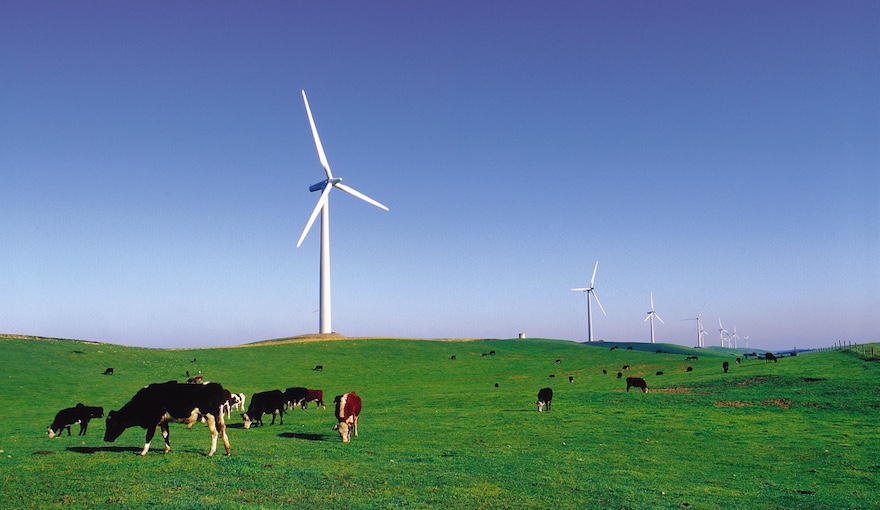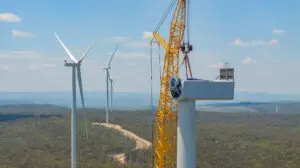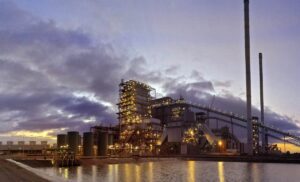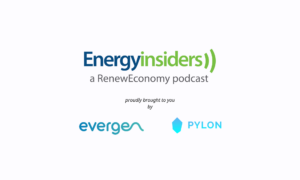There are three ways to bring down a wind turbine: delicately un-build it with a crane, cut a wedge from the base and topple it like a tree, or use explosives to blow it up from the bottom.
These are the options put to Pacific Blue as it looks to decommission its 18.2 megawatt (MW) Codrington wind farm come 2027.
The three methods are what’s currently being used globally for retirement-age wind farms and are part of a report by renewables consultancy Everoze for Pacific Blue, to uncover the options in Australia and around the world for decommissioning and recycling.
“Decommissioning of renewable sites and the responsible recycling of their components is an important issue being faced here in Australia and right around the world,” Pacific Blue told Renew Economy on Wednesday.
“Pacific Blue will be at the forefront of responsible decommissioning in Australia. We are determined to find pioneering solutions that can set an example for the industry as well as satisfying local expectations.”
Unlike fossil fuel generators, or mines which come with decades of rehabilitation costs, decommissioning wind farms can actually be a revenue earner.
That’s a fact which has global companies beginning to show interest in Australia, which a forthcoming Re-Alliance reports estimates at 85 wind farms by 2045 containing 3,068 turbines.
Steel scrap prices between $200-400 tonne come close to covering the cost of decommissioning and materials such as copper inside cables are other sources of potential revenue, says Everoze partner David Millar.
Already Australia has the facilities and demand to recycle about 95 per cent of a turbine.
“[There is] lots of contractor capability, both in Australia and offshore. So I think that’s a really good thing,” Millar told the Wind Industry Forum in Melbourne on Tuesday.
“We discovered there are [demolition contractors] looking to set up in Australia. They see the industry’s going to grow in decommissioning, and they want to be here to help run these projects and do it properly, so they’re ready and waiting.
“[And there are] contractors, saying we’d be interested to do an EPC contract on decommissioning, so actually take responsibility for the whole project including recycling.”
There are also options to sell complete or parts of older turbines, with a market for old parts from Europe already existing in Australia, Millar says.
The 10 Mile Lagoon wind farm in Western Australia sent some of its old turbines to North Metropolitan TAFE last year, and there is an active market in Europe and the US for old parts.
What to do with blades?
Blades, made of multiple different composite materials, are still a big question in Australia but it’s a surmountable problem.
“The cement industry in Australia is very keen and willing to be involved in helping to deal with blades,” Millar said.
“Mechanical grinding is used globally. Chop it up, goes in as a filler into products and it’s also used as co-processing into cement kilns, so it reduces fuel requirements. So there’s a benefit there, but it’s not as good as recycling, getting all the materials back. But there’s a lot of work going into that, and I’m confident there will be solutions.”
Current blade recycling technology involves either chemical or heat processing to separate the fibres from the resin, or mechanical grinding.
Spanish renewable energy infrastructure company Acciona Energía is looking into recycling options and has already demonstrated the mechanical option for blades from its Waubra wind farm in Victoria, turning the remains into shoes and surfboards.
But the most likely option is as a cement additive because mechanical recycling is the fastest and most achievable solution, says Delta Group senior project manager Andrei Naumovich.
He says there are more than 40 concrete recycling facilities across Australia, using processes that aren’t dissimilar to what’s needed to break down a turbine blade.
But it needs governments to provide incentives to start, as they did for concrete recycling, such as financial help to modernise facilities.
“[Some] years ago concrete was about 10 per cent of total volume, now it’s 90 per cent. It happened not by accident but by… steps the government was performing and the market was reacting,” he told the industry forum.
Other policies that will spur a blade recycling industry include landfill bans similar to those Germany already has in place, tax incentives to recover the cost of R&D, revising concrete standards to allow composite materials to be included, and requiring recycling options to be part of auction tenders.
Furthermore, composite materials are not just a wind industry problem: these only make up perhaps 10-20 per cent of this kind of waste, says Millar.
“Blades are only one source of composite waste… construction, transportation. It’s a bigger issue than just the wind turbine industry… [but] certainly the wind turbine industry will get focused on,” he said.
Blow it up or take it down?
Millar says blowing turbines up, or “explosive collapse”, is on the table in Australia because it’s quick and on paper looks cheap compared to the other methods that require expensive machinery.
However, dropping the turbine on the ground is likely to create some environmental and community expectation issues, and there will be costs involved with planning approvals.
The other issue Millar’s team canvassed for Pacific Blue is what to do with the non-turbine parts of the wind farm.
“The conditions in the landowner contracts are really critical. Sometimes it will say you must remove the whole foundation, or you need to take all the roads out,” Millar says.
“With respect to the wind turbine foundations you might be able to take off the top off the wind farm foundation, put some dirt across the top, and that’s that’s enough. Sometimes there’ll be a requirement… to remove the whole 300-400 tonne piece of concrete necklace.
Substations must be removed, but tracks, outbuildings, and underground cables may or may not be able to be left in the ground – depending on the landowner.
“In the coming months, we are set to work collaboratively with the industry, government, regulatory bodies as well as the community to provide leadership on best practice and to finalise a plan for the Codrington Wind Farm assets,” a Pacific Blue spokesperson said.








